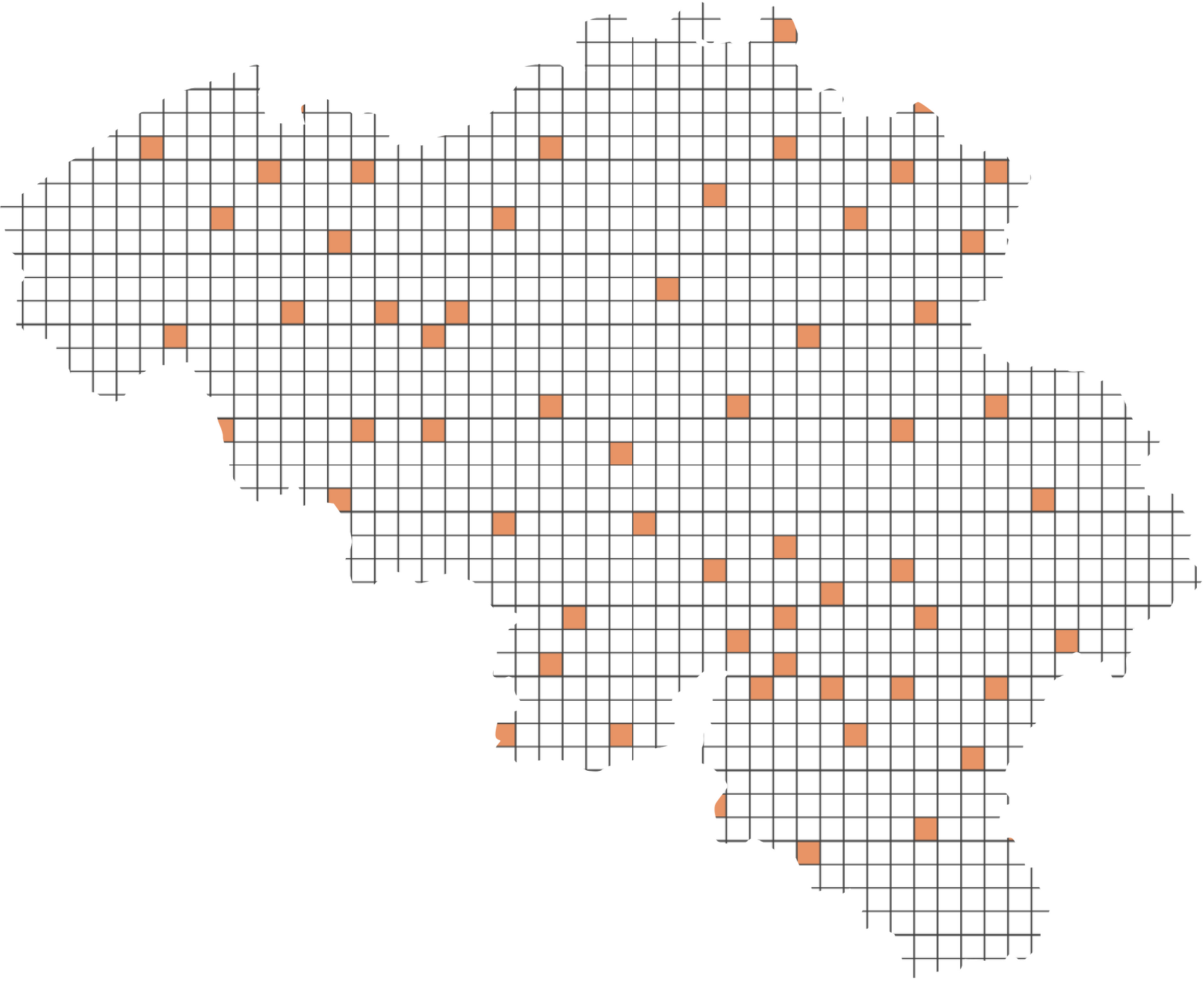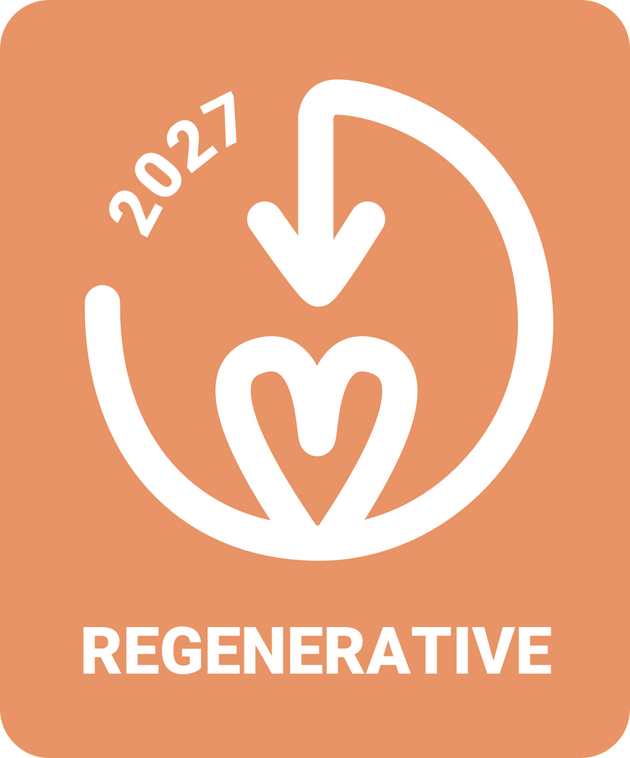Why it matters
“Regenerative” is claimed by a growing number of frameworks and labels. Most focus on practices rather than outcomes, which leads to contradictions, inflated claims, and confusion.
Yet soil regeneration is, at its core, about restoring soil microbiology—and very few actually measure it.
What's behind the gap
1. No common framework
Existing soil-microbiology analysis methods are often too complex, costly, or unreliable. There’s been no consensus on how to measure outcomes.
2. Insufficient lab infrastructure
Soil samples evolve quickly — their microbiology shifts with temperature, moisture, light, oxygen, and transit time. Lab proximity matters.
Why Belgium - and why now?
Belgium’s scale enables coordinated implementation at the national level. With Pachalab, now fully operational and centrally located in the country, and with the opportunity to leverage the new SVI framework, the pieces are in place for a nation-wide monitoring. The program is scheduled to launch in early 2026.

Framework
Soil Vitality Index (SVI)
The Soil Vitality Index (SVI) is an open framework to assess soil vitality, currently being calibrated for Belgium.
OUTCOME-BASED - measures biological progress, not farming practices.
CREDIBLE - co-developed with researchers in an open and transparent way.
PRACTICAL & AFFORDABLE - effortless for farmers, low-cost by design.
How it works
3 easy steps
ENROLL - Register your parcel, pay online, and commit for at least 2 years.
WE ANALYSE - The lab handles on-site sampling and analysis.
GET RECOGNISED - Your parcel earns a status and yearly updates.
Recognition Statuses
Year 1
Engaged
Recognition starts the moment you commit to measuring. If your soil microbiology is already advanced, you may directly earn Regenerative.

From Year 2
Regenerative
Recognition is awarded when your parcel shows measurable biological progress year after year, or sustains an advanced vitality level.

Pricing
| Type of plot | Cost (€) (excl. VAT) |
|---|---|
| Market-garden plot | €100 + €50 / sample |
| Field parcel | €100 / parcel + €20 / ha |
Example: a 5-ha parcel = €100 + (€20 × 5) = €200 / year (excl. VAT).
A minimum 2‑year commitment is required.
Prices include on-site sampling and analysis anywhere in Belgium.
A robust and diverse network
Our partners
We are currently building our network of partners for the launch in early 2026. Interested in discussing this?
Program launch, map expansion and other news
Stay in the loop
FAQ
What does it mean to regenerate soil, exactly?
It is not the soil as a material we aim to regenerate, but its biological functioning — the life it contains. A depleted soil is one that has lost its microorganisms, its ability to transform organic matter, to nourish plants, and to structure itself naturally. What we seek to restore is living soil.
Can soil organic matter alone confirm regeneration?
No. A soil may show an increasing level of organic matter without being regenerated. Quantity alone says nothing about quality or biological functioning:- part of the OM may be too stable (old humus, carbon bound to clays) or come from inputs unfavorable to life (carbonized compost, anaerobic digestates low in diversity, exotic amendments potentially carrying pathogens);- compacted or poorly aerated soils promote anaerobic decomposition, which is inefficient and sometimes toxic;- without a complete and diverse microbial food web (protozoa, nematodes, mycorrhizal fungi, nitrogen fixers, phosphorus solubilizers, etc.), nutrients remain locked up and the soil functions poorly.The organic matter level is only a partial indicator. Only the observation of soil life can confirm true regeneration.
Do “regenerative” practices guarantee soil regeneration?
No. Following practices such as cover crops, no-till methods, or organic amendments does not in itself ensure that soil life is being restored. A soil can remain biologically poor despite widely recommended choices, because each field has its own soil, climate, history and constraints. That is why it is essential to measure not the practices being applied, but their actual impact on living soil.Measuring outcomes in this way restores freedom to farmers and agronomists, allowing them to connect causes with consequences over time and rely on their own observations, rather than on conflicting advice from prescriptive frameworks.
Why focus on microorganisms (rather than earthworms or other indicators)?
Microorganisms — fungi, bacteria, protozoa, nematodes — are the foundation of how soil functions.The presence of earthworms is a good sign, as it often indicates a soil that is aerated, little disturbed, and rich in organic matter. But it remains an indirect indicator. Earthworms depend on abundant and balanced microbial life for their food. Their return can therefore signal an improvement, but it is not, on its own, proof of full regeneration.Some soils can regenerate with few earthworms, depending on their texture or pH. Others may temporarily host earthworms without their soil biology being truly restored.That is why the analysis of functional microbial life remains the only direct and universal indicator of regeneration in progress.
Is genetic analysis required to measure soil regeneration?
Not for assessing the regeneration of your soil. DNA-based tests can indeed identify species, and they are valuable in certain contexts — for example, to detect specific pathogens, track invasive organisms, or build scientific inventories of biodiversity.However, they are costly, and they do not always distinguish between living and inert organisms, nor do they reveal the actual functions these organisms are performing in the soil.By contrast, direct microscopic observation provides:
- the quantity of active organisms (biomass),
- the trophic balance (functional proportions).These aspects are far more relevant for evaluating microbial regeneration and soil vitality.
Is there a correlation between organic matter and microbial life?
Yes, there is a general correlation, confirmed by science: more organic matter tends to support more microorganisms. Yet we can also observe:
- soils rich in organic matter but biologically poor (e.g. inert, compacted),
- soils rich in microbial life despite only moderate levels of organic matter, thanks to fresh roots and favorable structure.That’s why it’s essential to directly measure the microbial life in your soil.
Does organic matter create microbiology, or is it the other way around?
It’s a cycle. Living roots exude sugars that feed microbes; microbes then transform plant residues into stable humus, structure the soil, and release nutrients for plants. Without microorganisms, organic matter may accumulate… but it does not function.
Are microbial biomass and activity sufficient as indicators?
They provide useful information, but they are incomplete:
- Biomass shows the quantity, but not the diversity or the functions.
- Activity shows that the system is alive, but not in which direction (balanced or dominated by pathogens).It is also necessary to measure trophic balance, functional diversity, and temporal stability to truly assess regeneration.
Isn’t the analysis of living organisms influenced by external factors?
Yes. Temperature, humidity, light and other field conditions do affect microorganisms. However, a soil that is clearly alive will not appear “dead,” nor the opposite, simply due to short-term environmental variation. The real risk comes once samples are collected and transported, when these factors can have a much stronger impact.This is precisely why we conduct sampling and analysis directly on site:
- it allows us to choose the right moment, when conditions are favorable,
- it enables us to document local conditions at the time of sampling,
- and it ensures that analysis is carried out within the hour after collection.
Why is soil life rarely measured in regenerative frameworks?
Because soil microbiology is still an emerging science. It is rarely taught, lacks clear standards, and few laboratories worldwide can reliably analyze living soil. Existing methods are often too complex, costly, or inconsistent, and there is still no consensus on outcome-based metrics.It is also harder to standardize, since microorganisms respond quickly to climate, sampling time, and transport. Samples degrade fast — their biology shifts with temperature, moisture, oxygen, and delay — which is why lab proximity (ideally within 200 km) is essential.Still, when such a lab exists locally, there is no valid reason to exclude this dimension. Claiming soil regeneration without measuring life is misleading — and it disserves the regenerative agriculture movement we are all fighting for.

